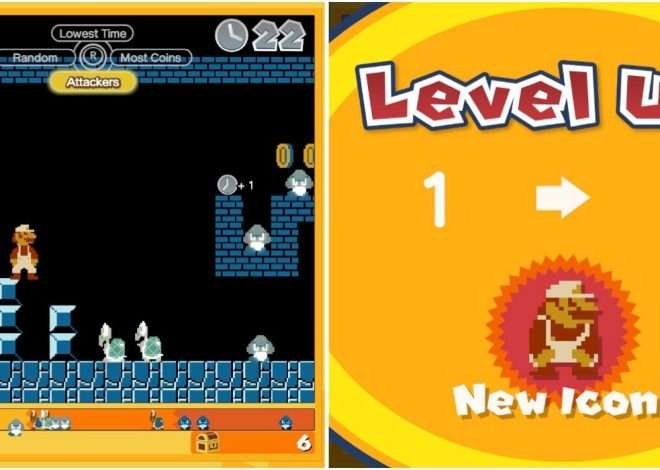The Last of Us Part II: Accessibility Features and Their Broader Implications
Sony’s bold claim that The Last of Us Part II will be their “most accessible game yet” is a significant statement. It underscores a growing awareness within the gaming industry regarding the importance of inclusivity. This commitment to accessibility transcends mere marketing; it represents a fundamental shift in game design philosophy. The implementation of numerous accessibility features promises to broaden the game’s appeal to a wider and more diverse player base.
Accessibility Features: A Detailed Look
The specifics of The Last of Us Part II’s accessibility features remain somewhat shrouded in mystery, pending official confirmation and detailed release notes. However, based on pre-release information and industry trends, we can anticipate a comprehensive suite of options catering to diverse needs. We expect to see adjustments impacting visual, auditory, and motor control aspects of gameplay.
Visual Accessibility
Visual accommodations are likely to include customizable subtitles, offering options for size, color, background opacity, and speaker identification. High contrast modes will be vital for players with low vision, enhancing the visibility of on-screen elements. Adjustable field of view (FOV) will provide comfort and reduce motion sickness for many players. Furthermore, colorblind modes will be crucial for ensuring all players can easily distinguish between different game elements.
Beyond these standard features, we can hope for more advanced options. Dynamic difficulty adjustments could automatically tailor the challenge based on player performance, ensuring a consistently engaging experience without frustrating difficulty spikes. Visual cues, such as enhanced highlighting of interactive objects, can prove invaluable for those who need extra visual assistance in navigating the game world.
Auditory Accessibility
Audio accessibility is equally crucial. Clear and customizable audio descriptions will likely be a key feature. These descriptions will provide players with detailed contextual information about visual elements, enabling those with visual impairments to fully engage with the narrative and gameplay. Subtitles with dialogue and sound effects (including important environmental cues) will further enhance immersion for those who rely on subtitles or have hearing impairments.
The sound design itself might be tweaked for better clarity and accessibility. Distinct sound cues for enemies, environmental hazards, and interactive objects can be vital for players relying heavily on audio feedback. The game’s soundtrack and sound effects could also be adjusted in terms of volume and equalization, providing more control over the overall auditory experience. This level of control empowers players to tailor the experience to their specific needs and preferences.
Motor Control Accessibility
For players with limited motor control, The Last of Us Part II will likely provide a range of customizable controls. Re-mappable controls will allow players to tailor button assignments to their physical capabilities. Alternative control schemes, such as simplified control options, will lower the skill barrier for those with dexterity challenges. Adjustable aiming sensitivity and auto-aim features will allow fine-tuning of responsiveness to suit individual needs.
Beyond standard control options, more sophisticated assistive technologies might also be incorporated. These could include features like button mashing prevention to prevent accidental inputs and alternative input methods, such as using eye-tracking technology. The inclusion of such features demonstrates a genuine commitment to making the game playable for individuals with a wide range of physical limitations.
The Broader Implications of Accessibility in Gaming
Sony’s commitment to accessibility in The Last of Us Part II isn’t just about making a single game more inclusive; it sets a precedent for the entire gaming industry. It signals a move towards a more equitable and welcoming gaming landscape, one where everyone can enjoy the immersive storytelling and challenging gameplay that define titles like this. This marks a significant step forward in the evolution of game development.
The benefits extend beyond simply widening the player base. By prioritizing accessibility, developers gain a deeper understanding of their audience and can create more inclusive and engaging experiences for everyone. This inclusive approach can translate to greater creativity and innovation, leading to more diverse and richer gaming experiences overall. Furthermore, it fosters a stronger sense of community among players, regardless of their abilities.
Beyond the Game: A Cultural Shift
The push for accessibility in gaming is part of a larger cultural shift towards greater inclusivity and equity. The gaming industry, once perceived as a niche hobby, has become a global phenomenon. With this growth comes a greater responsibility to ensure that the enjoyment of games is not limited by physical or cognitive differences. The increased focus on accessibility is a positive reflection of this evolving societal awareness.
This shift isn’t solely driven by ethical considerations; it’s also a smart business decision. By catering to a wider audience, game developers tap into a previously underserved market, expanding their potential player base and increasing profitability. This win-win situation benefits both gamers and the industry as a whole. Furthermore, the positive PR generated by accessible games is an additional, invaluable asset.
The Future of Accessible Gaming
The Last of Us Part II’s commitment to accessibility is a landmark achievement, but it’s only the beginning. We can anticipate future game releases to further improve upon and expand the accessibility features available. Collaboration between developers, accessibility experts, and gamers with disabilities will be crucial in shaping the future of accessible game design. This collaborative approach ensures that the features implemented are truly effective and meet the needs of the diverse player community.
The ongoing dialogue between developers and the disability community will be instrumental in determining future accessibility features. Feedback from players will play a vital role in refining existing features and identifying areas for future improvement. This constant process of refinement and adaptation will lead to increasingly sophisticated and inclusive gaming experiences for everyone.
- Improved AI and adaptive difficulty levels to personalize the challenge.
- More sophisticated input methods, such as eye tracking and brain-computer interfaces.
- Greater emphasis on customizable audio cues and environmental sounds.
- Wider integration of assistive technologies.
The future of accessible gaming is bright; The industry is increasingly recognizing the importance of inclusivity, and developers are actively seeking to create games that can be enjoyed by everyone, regardless of their abilities. This represents a significant step towards a more equitable and enjoyable gaming experience for all.
Examples of Existing Accessibility Features in Games
Before diving into the specifics of The Last of Us Part II, it’s beneficial to explore the landscape of existing accessibility features in other successful games. These examples demonstrate the potential of thoughtfully integrated accessibility features and inspire the direction for future developments.
- Subtitles and Closed Captions: Games like Horizon Zero Dawn and God of War offer detailed subtitles with speaker identification and options for font size and color. These features significantly enhance the experience for players who are deaf or hard of hearing.
- Customizable Controls: Many games allow players to remap controls, adjust sensitivity, and utilize alternative control schemes. The Witcher 3: Wild Hunt, for example, offers a range of control options, catering to players with various levels of motor control.
- Colorblind Modes: Games like Forza Horizon 5 and Call of Duty: Modern Warfare incorporate colorblind modes, enhancing the visibility of game elements for players with color vision deficiencies.
- Audio Descriptions: While still relatively rare, some games are beginning to include audio descriptions, providing contextual information for visually impaired players. This is a rapidly developing area, with growing potential.
These examples highlight the creativity and ingenuity involved in integrating accessibility features into games. They also demonstrate the positive impact that such features can have on the overall gaming experience. The Last of Us Part II is poised to build upon this foundation, potentially setting new standards for accessible game design.



